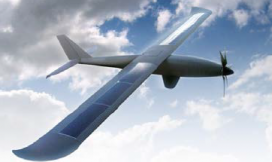Volpe Forecasts Growth in Use of Unmanned Aircraft
What does the future hold for unmanned aircraft? As reported widely in the media, Jeff Bezos, CEO of Amazon, foresees unmanned aircraft in the near future delivering packages to customer doorsteps within 30 minutes of receiving an online order. Is this Bezos’ pipedream or will unmanned aircraft become ubiquitous?
In a newly published report developed for the U.S. Air Force, Volpe, The National Transportation Systems Center, anticipates growth in the use of unmanned aircraft by governments and commercial entities in the next 20 years. The report, Unmanned Aircraft System (UAS) Service Demand 2015 -2035, provides a comprehensive, state-of-the-market overview of unmanned aircraft and forecasts unmanned aircraft fleet sizes over the next 20 years. Volpe’s Jason Glaneuski led the team that developed this report.
Volpe believes that unmanned aircraft operations could surpass manned aircraft operations by 2035. The technologies needed to support this transformation are developing rapidly, costs are diminishing, and applications are growing.
Non-defense federal agencies are forecast to have a fleet of 10,000 aircraft by 2035, up from the roughly 125 unmanned aircraft that currently support operations. Commercial markets for unmanned aircraft are expected to show accelerated growth in the next seven or eight years, with the commercial sector forecasted to operate 175,000 by 2035.
There are, of course, considerable challenges that must be overcome to ensure safety and environmental sustainability and realize the full economic and social benefits of unmanned aircraft. One key challenge is the development of a reliable sense and avoid capability for unmanned aircraft. This capability will ensure that unmanned aircraft will not crash into other aircraft operating in the airspace. Volpe is currently examining ground-based sense and avoid concepts in support of unmanned aircraft operations.
For readers who want to learn about the unmanned aircraft and state-of-the-market, the report contains a good technology overview and provides detailed assessments about airframes, propulsion systems, sensors, communications, and command and control systems.
The Volpe report is available online through the Volpe Technical Resource Center.

